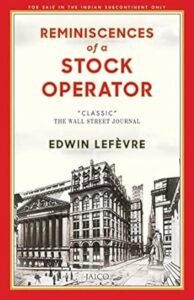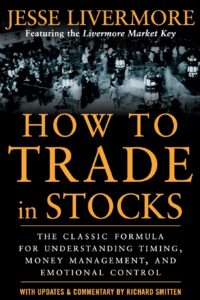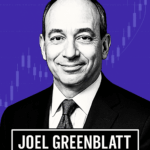JESSE LIVERMORE
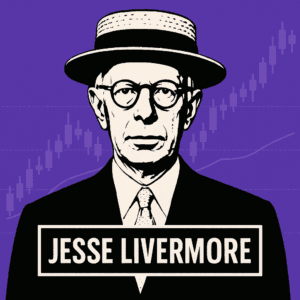
Key Takeaways from Jesse Livermore's Life and Career
Early Trading Prodigy
- Early Start: Began his career at 14 in a brokerage firm in Boston.
- Talent for Patterns: Developed a keen ability to notice stock price patterns.
- Nickname: Known as “The Boy Plunger” for his speculative success in bucket shops.
- Fame in New York: Gained recognition for daring trades, including profitable short selling before the 1907 and 1929 market crashes.
Counterintuitive Strategies and Challenges
- Unconventional Methods: Focused on market behavior and price patterns, often going against popular opinion.
- Trusting Judgment: Valued personal judgment over market consensus.
- Financial Ups and Downs: Experienced both spectacular successes and significant setbacks, including several bankruptcies.
Literary Contributions and Influence
- Author: Wrote ‘How to Trade in Stocks’ in 1940, sharing his trading insights.
- Depicted in Literature: His life and strategies are chronicled in Edwin Lefèvre’s ‘Reminiscences of a Stock Operator,’ a seminal work in trading literature.
Enduring Legacy and Wisdom
- Influential Figure: Despite personal and financial challenges, Livermore’s insights continue to influence traders and financial experts.
- Life Filled with Highs and Lows: Known for both his impressive achievements and profound personal struggles.
- Legacy: Remains a highly influential figure in trading circles, inspiring modern traders and financial professionals.

Who is Jesse Livermore ?
July 26, 1877
• Jesse Livermore is born in West Acton, Massachusetts.
1891 – aged 14
• Begins working at Paine Webber & Co in Boston, transferring prices from ticker-tape to the quotation board.
• At age 15, makes a $3.12 profit on his first trade in Burlington stock and accumulates his first $1,000 by trading stocks and commodities in bucket shops.
1893 – aged 16
• Paine Webber & Co gives Livermore an ultimatum to either stop speculating in bucket shops or leave his job. He chooses to quit his job.
• By age 20, he has accumulated $10,000 through trading in bucket shops.
• At 21, moves to New York to trade on the NYSE through legitimate stockbrokers. His fortune is reduced to $2,500 due to unsuccessful trading.
• Loses all his funds due to the slow execution of trades on the NYSE. Borrows $500 and goes to St. Louis to trade in bucket shops. Returns to New York with $2,500, repays the loan, and resumes trading on both the Exchange and in bucket shops.
1901 – aged 23
• On May 9, starts the day with $50,000 but ends it broke due to ticker lag.
• Returns to bucket shops and wire houses, planning to gather a stake to trade on the Stock Exchange again. Deals in small sums but consistently wins.
1902 – aged 24
• After a year of successful trading in wire houses, accumulates enough money to buy an automobile and adopts an expensive lifestyle. Returns to New York with a substantial amount of money.
1906 – aged 28-29
• In the spring, makes a $250,000 profit by shorting stocks based on a hunch preceding the San Francisco earthquake.
• In the summer, loses $40,000 acting on a tip from Ed Harding.
• On October 24, shorts the market during a crash and makes his first $1 million.
• Later that year, buys a yacht but loses $200,000 trading cotton.
1908 – aged 30-31
• Breaks his trading rules by taking advice from commodities expert Percy Thomas, resulting in significant losses. Increases his losing position in cotton and sells his winning position in wheat, going broke.
• Moves to Chicago, where a trading house, aware of his abilities, offers him limited finance for trading.
• Summoned back to New York by Dan Williamson, who gives him $25,000 to resume trading.
• After three weeks, makes a $112,000 profit, but leaves the relationship when Williamson interferes with his trading.
1914 – aged 36
• In several years of a flat market, accumulates debts exceeding $1 million. Declares bankruptcy, which he later states freed his mind for successful trading.
February 1915 – aged 37
• Asks Dan Williamson for help and is given the facility to trade 500 shares. Reads the tape for six weeks before making a trade to ensure profitability. Buys Bethlehem Steel at $98, sells at $145, regaining a sizeable stake.
Late 1915 – aged 38
• After several months of successful trading, his balance stands at $145,000.
1916 – aged 38-39
• Plays the market perfectly, making $3 million profit and spends the winter in Palm Beach.
1917 – aged 40
• Makes another $1.5 million profit, repays all his debts from 1914, buys $800,000 in annuities to secure his family’s income, and sets up trusts for his wife and son.
1922 – aged 44-45
• Gives interviews to Edwin Lefèvre for a series of newspaper articles, later compiled into the book “Reminiscences of a Stock Operator,” which becomes a classic.
1923 – aged 46
• Moves to custom-designed offices in the Hecksher Building on Fifth Avenue to avoid Wall Street gossip and ensure more privacy in his trading operations.
1925 – aged 48
• In the wheat market, buys grain in 5 million bushel lots while the market is rising, then sells 50 million bushels short for a profit of $10 million.
1929 – aged 52
• During the great crash of 1929, goes short and makes a profit of around $100 million.
1933 – aged 56
• The police are called when he goes missing. Returns home after spending a night in a hotel, suffering from amnesia and a nervous breakdown.
1934 – aged 56
• Goes bankrupt again, losing his entire trading fortune. His family’s annuities save him from destitution. Travels to Europe to relieve his mind of troubles.
• March 7: Suspended as a member of Chicago Board of Trade
1937 – aged 59
• Livermore pays up his $800,000 Tax Bill
1939 – aged 62
• Writes “How to Trade in Stocks,” a guide for aspiring stock traders.
1940 – aged 62
• Publishes “How to Trade in Stocks.”
November 28, 1940 (63)
• Commits suicide, suffering from depression. In his suicide note, he describes his life as a “failure.”

Personal Life
1900
- October: At the age of 23, Jesse Livermore married Netit (Nettie) Jordan of Indianapolis after knowing each other for only a few weeks.
1901
- Less than a year after marriage, Livermore went broke due to bad trades. He asked Nettie to pawn her jewelry for a new stake, but she refused, causing a permanent strain in their relationship.
- They separated soon thereafter, though Livermore funded the defense of his brother-in-law, Chester S. Jordan, who was charged with murdering his wife.
1917
- October: Livermore and Nettie officially divorced.
1918
- December 2: At the age of 40, Livermore married 22-23-year-old Dorothea (Dorothy) Fox Wendt, a former Ziegfeld girl.
1919
- Jesse Livermore II, Livermore and Dorothy’s first son, was born.
1922
- Their second son, Paul, was born.
1927
- Livermore and Dorothy were burglarized at gunpoint in their home.
1931
- Dorothy filed for divorce due to strained relations caused by her drinking habits, Livermore’s affairs, and their lavish spending.
1932
- September 16: Dorothy was granted a divorce and immediately married her new lover, James Walter Longcope. She retained custody of their two sons and received a $10 million settlement.
- Dorothy sold the house in Great Neck for $222,000, significantly less than the $3.5 million Livermore had spent on it, which depressed him.
1933
- March 28: Livermore, now 56, married 38-year-old singer and socialite Harriet Metz Noble in Geneva, Illinois. They had met in 1931 in Vienna.
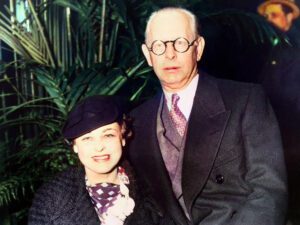
Jesse Livermore's Investing Principles
Don’t trust your own opinion and back your judgment until the action of the market itself confirms your opinion.
Markets are never wrong – opinions often are.
There is only one side to the stock market; and it is not the bull side or the bear side, but the right side confirms your opinion.
To anticipate the market is to gamble. To be patient and react only when the market gives the signal is to speculate.
If you can’t sleep at night because of your stock market position, then you have gone too far. If this is the case, then sell your position down to the sleeping level.
One of the most helpful things that anybody can learn is to give up trying to catch the last eighth-or the first. These two are the most expensive eighths in the world.
There is nothing like losing all you have in the world for teaching you what not to do.
The game taught me the game. And it didn’t spare the rod while teaching.
The market does not beat them. They beat themselves, because though they have brains they cannot sit tight

If I hadn’t made money some of the time I might have acquired market wisdom quicker.
… for when I am wrong only one thing convinces me of it, and that is, to lose money.
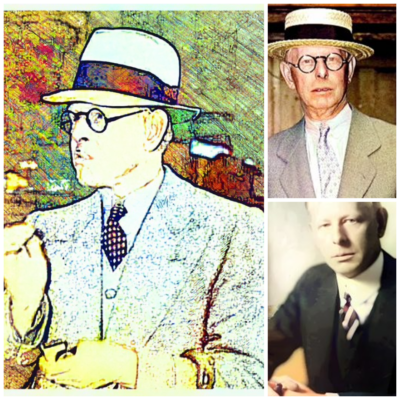
The game of speculation is the most uniformly fascinating game in the world. But it is not a game for the stupid, the mentally lazy, the person of inferior emotional balance, or the get-rich-quick adventurer. They will die poor
Getting sore at the market doesn’t get you anywhere.
I never lose my temper over the stock market. I never argue with the tape.
The stock market is never obvious. It is designed to fool most of the people, most of the time.
No one ever went broke by taking a profit.
The principles of successful stock speculation are based on the supposition that people will continue in the future to make the mistakes that they have made in the past
There is nothing like losing all you have in the world for teaching you what not to do. And when you know what not to do in order not to lose money, you begin to learn what to do in order to win. Did you get that? You begin to learn!
A stock operator has to fight a lot of expensive enemies within himself.
No man can always have adequate reasons for buying or selling stocks daily or sufficient knowledge to make his play an intelligent play.
“Well,” said the duelist, “I can snap the stem of a wineglass at twenty paces,” and he looked modest.
“That’s all very well,” said the unimpressed second. “But can you snap the stem of the wineglass while the wineglass is pointing a loaded pistol straight at your heart?”

"Reminiscences of a Stock Operator" by Edwin Lefevre
“Reminiscences of a Stock Operator,” written by Edwin Lefèvre, is a timeless classic that offers a captivating insight into the world of stock trading. This book, first published in 1923, remains a must-read for both seasoned investors and those new to the stock market. It presents a fictionalized account of the life of Jesse Livermore, one of the most famous traders in history, through the eyes of its protagonist, Larry Livingston.
Plot Summary
The narrative chronicles Livingston’s journey from his humble beginnings as a young boy trading stocks in bucket shops to his rise as a Wall Street legend. The story is not just about his triumphs but also about his failures and the invaluable lessons he learns along the way. It offers a detailed account of his strategies, thought processes, and the emotional rollercoaster that accompanies the life of a trader.
Key Themes
Psychology of Trading: One of the standout aspects of the book is its focus on the psychological elements of trading. Livingston’s experiences highlight the importance of discipline, patience, and the ability to manage emotions. His reflections on the folly of trading based on tips and the necessity of developing one’s own informed judgment are particularly enlightening.
Market Mechanics: Lefèvre provides an in-depth look at the mechanics of the stock market. From the workings of bucket shops to the intricacies of trading on the New York Stock Exchange, the book serves as an educational resource that demystifies the complexities of the market.
Risk Management: Livingston’s story underscores the critical importance of risk management. His significant losses, often due to over-leverage or failure to adhere to his own rules, serve as cautionary tales for traders. The concept of cutting losses and letting profits run is a recurring lesson throughout the book.
Adaptability: The protagonist’s ability to adapt to changing market conditions is a key theme. Livingston’s evolution from a bucket shop trader to a Wall Street operator illustrates the necessity of evolving one’s strategies in response to the market environment.
Conclusion
“Reminiscences of a Stock Operator” is a seminal work that continues to resonate with traders and investors nearly a century after its publication. Edwin Lefèvre’s portrayal of Jesse Livermore’s life offers timeless lessons in trading psychology, risk management, and market mechanics. Whether you’re a novice investor or an experienced trader, this book provides valuable insights and a fascinating glimpse into the highs and lows of a stock operator’s life.
For those looking to understand the human side of trading and the timeless principles that govern successful speculation, “Reminiscences of a Stock Operator” is an indispensable read. Its blend of narrative flair and practical wisdom ensures its place as a cornerstone of financial literature.
"How to Trade in Stocks" by Jesse Livermore
Jesse Livermore, one of the most legendary stock traders in history, encapsulates his extensive knowledge and trading strategies in his seminal work, “How to Trade in Stocks.” Published in 1940, this book is an invaluable resource for anyone seeking to understand the intricacies of stock trading and speculation. Livermore’s insights, drawn from his own experiences in the stock market, provide timeless lessons that remain relevant in today’s financial landscape.
Overview
“How to Trade in Stocks” is more than just a manual on trading; it’s a comprehensive guide that delves into the psychology, strategy, and discipline required to succeed in the stock market. The book is structured in a way that takes readers through the fundamental principles of trading, the development of a trading system, and the crucial aspects of money management.
Key Themes
Trading Strategies: Livermore shares his detailed strategies for buying and selling stocks. He emphasizes the importance of timing in trading and the necessity of waiting for the right market conditions. His famous “pivotal points” strategy, which involves identifying critical price levels where stocks are likely to make significant moves, is thoroughly explained.
Market Psychology: One of the book’s standout features is its focus on the psychological aspects of trading. Livermore discusses the emotional challenges traders face, such as fear and greed, and offers advice on how to maintain discipline and avoid common psychological pitfalls. His insights into the importance of mental fortitude are particularly valuable for traders at any level.
Money Management: Livermore highlights the significance of proper money management techniques. He advises traders to always protect their capital by using stop-loss orders and to never risk more than a small percentage of their trading capital on a single trade. This conservative approach to risk management is a key element of his overall trading philosophy.
Market Analysis: The book provides a thorough analysis of market trends and the importance of understanding market cycles. Livermore explains how to read stock charts and use them to make informed trading decisions. His approach to analyzing market behavior and anticipating future movements is rooted in his deep understanding of market mechanics. emotional control, which may be challenging for beginners to master.
Conclusion
“How to Trade in Stocks” by Jesse Livermore is an essential read for anyone serious about stock trading. Livermore’s firsthand experiences and strategic insights offer invaluable lessons on the complexities of the market. Despite being written over eight decades ago, the book’s core principles of timing, psychology, and money management remain highly relevant and applicable.
Livermore’s legacy as one of the greatest traders of all time is cemented in this book, which continues to inspire and educate new generations of traders. Whether you are a novice looking to build a strong foundation or an experienced trader seeking to refine your strategies, “How to Trade in Stocks” provides a wealth of knowledge that can enhance your trading acumen and help you navigate the ever-changing stock market landscape.
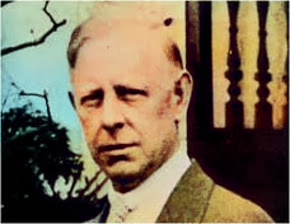
Jesse Livermore's Trading Principles
1. The Importance of Patience
One of Livermore’s core principles was the importance of patience in trading. He believed that waiting for the right opportunity was crucial for success.
“It was never my thinking that made the big money for me. It always was my sitting. Got that? My sitting tight!”
This quote underscores the value of waiting for the perfect market conditions rather than constantly trading. Livermore emphasized that successful trading often involves long periods of inactivity, where patience and discipline are essential.
2. Understanding Market Trends
Livermore was a firm believer in following market trends. He understood that the market moves in cycles, and recognizing these patterns was key to making profitable trades.
“Markets are never wrong – opinions often are.”
Livermore taught that traders should focus on what the market is telling them, rather than trying to impose their own beliefs on market movements. By aligning with the prevailing trend, traders can increase their chances of success.
3. Cutting Losses Quickly
One of Livermore’s most famous principles is the importance of cutting losses quickly. He knew that preserving capital was essential for long-term success in trading.
“The game of speculation is the most uniformly fascinating game in the world. But it is not a game for the stupid, the mentally lazy, the person of inferior emotional balance, or the get-rich-quick adventurer. They will die poor.”
This quote highlights the need for traders to be disciplined and proactive in managing their risks. By cutting losses early, traders can prevent small setbacks from becoming devastating blows to their portfolios.
4. The Power of Self-Discipline
Self-discipline was a cornerstone of Livermore’s trading philosophy. He believed that traders needed to control their emotions and stick to their strategies, regardless of market conditions.
“There is nothing new on Wall Street. There can’t be because speculation is as old as the hills. Whatever happens in the stock market today has happened before and will happen again.”
Livermore’s words remind traders that the market’s ups and downs are part of a recurring cycle. By maintaining self-discipline and avoiding emotional reactions, traders can navigate these cycles more effectively.
5. Learning from Mistakes
Livermore was candid about his own mistakes and believed that learning from them was crucial for growth as a trader.
“A man must believe in himself and his judgment if he expects to make a living at this game.”
This quote underscores the importance of self-confidence and the ability to learn from past errors. Livermore’s willingness to analyze his mistakes and adapt his strategies accordingly was a key factor in his enduring success.
6. Capitalizing on Major Moves
Livermore emphasized the importance of capitalizing on major market moves rather than focusing on minor fluctuations.
“After spending many years in Wall Street and after making and losing millions of dollars I want to tell you this: It never was my thinking that made the big money for me. It always was my sitting. Got that? My sitting tight!”
This quote reinforces the idea that significant profits often come from holding positions during major market trends, rather than from frequent, small trades.
Conclusion
Jesse Livermore’s trading principles, derived from his extensive experience and encapsulated in his memorable quotes, offer valuable insights for traders today. His emphasis on patience, understanding market trends, cutting losses, self-discipline, learning from mistakes, and capitalizing on major moves provides a timeless framework for trading success. By adhering to these principles, modern traders can navigate the complexities of the financial markets with greater confidence and skill.
1. Patience is Key
o Livermore emphasized the importance of waiting for the right opportunity rather than constantly trading.
2. Market Trends
o Understanding and aligning with market trends is crucial for successful trading.
3. Cut Losses Quickly
o Preserving capital by cutting losses early is essential for long-term success.
4. Maintain Self-Discipline
o Traders must control their emotions and stick to their strategies regardless of market conditions.
5. Learn from Mistakes
o Analyzing and learning from past mistakes is critical for growth as a trader.
6. Capitalize on Major Moves
o Significant profits often come from holding positions during major market trends rather than from frequent, small trades.
7. Do Your Own Research
o Livermore believed in making independent trading decisions based on thorough research.
8. Understand Market Cycles
o Recognizing that markets move in cycles and adapting strategies accordingly is vital.
9. Avoid Overtrading
o Engaging in too many trades can be detrimental; focus on quality over quantity.
10. Keep Emotions in Check Overtrading
o Emotional trading often leads to poor decision-making; maintaining a clear and rational mindset is crucial.
Jesse Livermore's Trading Strategies: Mastering Market Behavior, Price Patterns and Independent Judgment
By focusing on market behavior, price patterns, and trusting his judgment over popular opinion, Livermore set a foundation that continues to influence modern traders. Let’s explore how he achieved remarkable success on Wall Street.
Mastering Market Behavior
Livermore’s deep understanding of market behavior was key to his success. He believed that markets were driven by human emotions like fear and greed, creating predictable patterns. By observing these patterns, Livermore could anticipate market movements and make informed trading decisions. His famous quote, “Markets are never wrong; opinions often are,” reflects his belief that the market itself is the ultimate source of truth.
Livermore studied market cycles meticulously, recognizing that history often repeated itself. This perspective allowed him to predict significant market events, including the crashes of 1907 and 1929, where he made substantial profits through short selling.
Focusing on Price Patterns
Price patterns were central to Livermore’s trading strategy. He carefully charted stock prices, looking for recurring formations that indicated future movements. His approach was systematic and disciplined, believing that prices moved in trends that, if identified early, could lead to substantial gains.
One of Livermore’s key techniques was identifying “pivot points,” critical levels where price direction was likely to change. This helped him enter and exit trades at optimal times. His “pyramiding” method involved adding to his positions as the market moved in his favor, maximizing profits while minimizing risk.
Livermore’s “tape reading” technique involved analyzing stock prices and volumes to gauge market sentiment and momentum in real time. This allowed him to make swift trading decisions, often ahead of other market participants, earning him the nickname “The Boy Plunger.”
Trusting Personal Judgment Over Popular Opinion
A defining aspect of Livermore’s strategy was his reliance on personal judgment over popular opinion. He believed that true market opportunities often lay in going against the crowd. Livermore was a contrarian by nature, wary of herd mentality. He would often short stocks when everyone else was buying and buy when others were selling.
Livermore’s contrarian approach required immense confidence and conviction. He emphasized maintaining emotional control and not being swayed by market noise. His quote, “The stock market is never obvious. It is designed to fool most of the people, most of the time,” highlights his belief in the deceptive nature of market movements and the necessity of independent analysis.
His ability to remain detached from the emotional highs and lows of trading allowed him to make objective decisions based on his analysis of market behavior and price patterns. Livermore’s discipline and self-control were crucial in adhering to his strategies, even when they went against prevailing market trends.
Conclusion
Jesse Livermore’s trading strategies, rooted in a deep understanding of market behavior, meticulous analysis of price patterns, and unwavering trust in personal judgment, set him apart as a pioneering figure in trading. His methods, developed in the early 20th century, remain highly relevant today. Modern traders continue to learn from Livermore’s approach, recognizing that success requires analytical rigor, emotional discipline, and the courage to stand apart from the crowd. Livermore’s legacy is a testament to the enduring power of independent thinking and the timeless principles of market analysis.
By mastering these strategies, traders can navigate the complexities of the market with greater confidence and potentially achieve remarkable success, just like Jesse Livermore.

